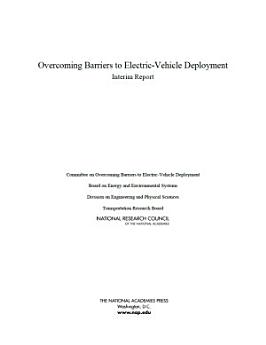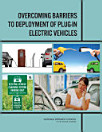Overcoming Barriers to Electric-Vehicle Deployment: Interim Report
આ ઇ-પુસ્તક વિશે
This committee documented their findings in two reports-a short interim report focused on near-term options, and a final comprehensive report. Overcoming Barriers to Electric-Vehicle Deployment fulfills the request for the short interim report that addresses specifically the following issues: infrastructure needs for electric vehicles, barriers to deploying the infrastructure, and possible roles of the federal government in overcoming the barriers. This report also includes an initial discussion of the pros and cons of the possible roles. This interim report does not address the committee's full statement of task and does not offer any recommendations because the committee is still in its early stages of data-gathering. The committee will continue to gather and review information and conduct analyses through late spring 2014 and will issue its final report in late summer 2014.
Overcoming Barriers to Electric-Vehicle Deployment focuses on the light-duty vehicle sector in the United States and restricts its discussion of electric vehicles to plug-in electric vehicles (PEVs), which include battery electric vehicles (BEVs) and plug-in hybrid electric vehicles (PHEVs). The common feature of these vehicles is that their batteries are charged by being plugged into the electric grid. BEVs differ from PHEVs because they operate solely on electricity stored in a battery (that is, there is no other power source); PHEVs have internal combustion engines that can supplement the electric power train. Although this report considers PEVs generally, the committee recognizes that there are fundamental differences between PHEVs and BEVs.




